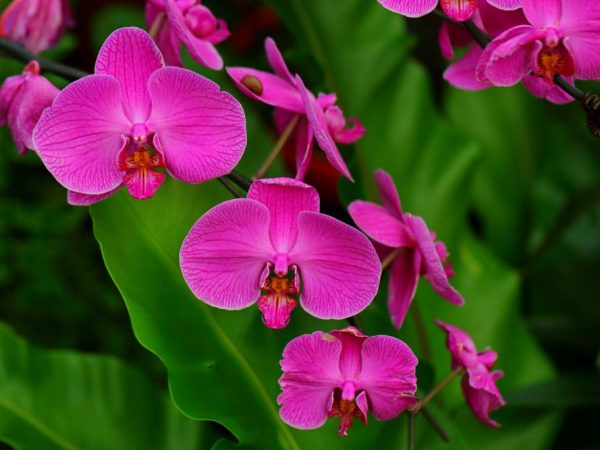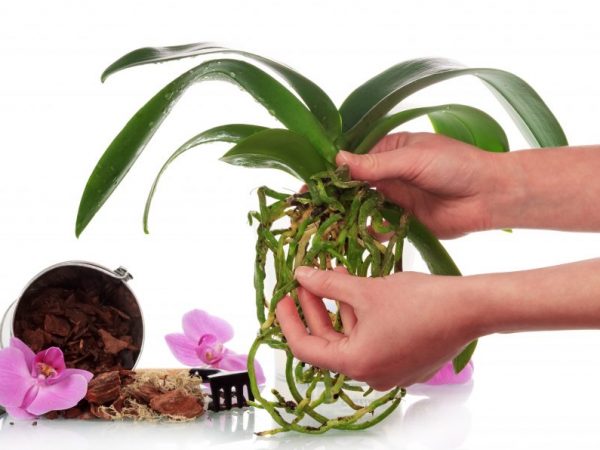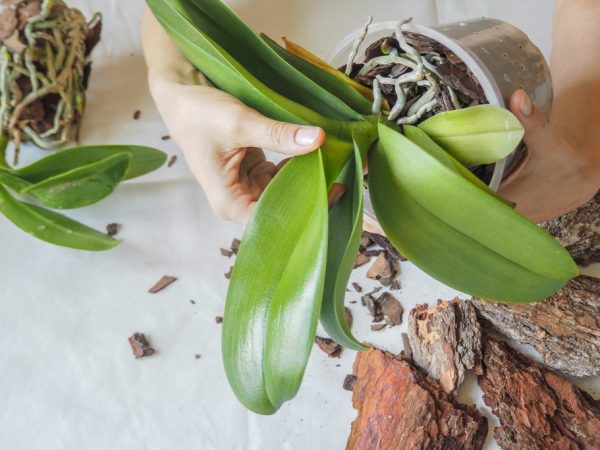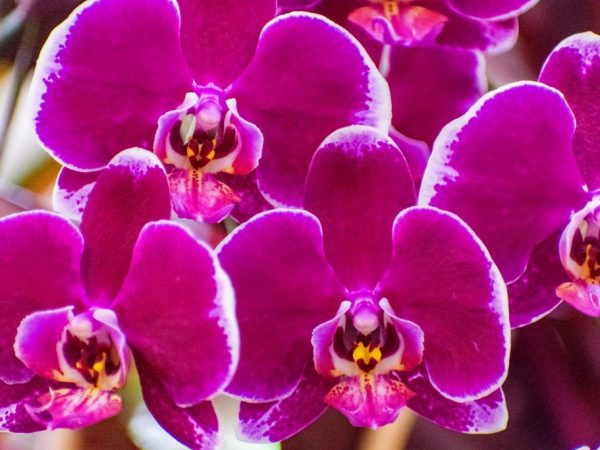Orchid Emperor's Pearl
Probably, there are no gardeners who would not be attracted by the magical and mysterious plant - the orchid. Orchid The Emperor's Pearl belongs to monopodial epiphytes, large with a beautiful and luxuriant color.

Orchid Emperor's Pearl
Description of the variety
The stem of the orchid is short, with two rows of fleshy, dark green leaves 15 to 35 cm long and 5-10 wide. The peduncle is about 70 cm long, slightly inclined. The inflorescence is multi-flowered, branched and racemose, the flowers themselves are large, 6-8 cm in diameter. A flower with a delicate structure, dark crimson with a gradation to white at the very edge of the petal. Flowering lasts from November to February, without a pronounced dormant period.
Growing
Like all orchids, the Emperor's Pearl is capricious, but in moderation. She will happily grow at normal room temperature, without direct sunlight. If the flower is warm to the touch, give it a light cool shower and increase the humidity in the room. The recommended temperature regime is 16-20 ° С, with a night difference of 5 ° С. Lowering the temperature is necessary for the formation of the peduncle.
This orchid is not demanding on moisture, unlike other phalaenopsis species. But the flower will be happy to be in a tray of water in the warm season.
Substrate
To a large extent, the substrate for orchids consists of small and medium bark and moss - sphagnum. Before planting, the bark must be rinsed and soaked for several days, and allowed to saturate with moisture. After that, drain this water and rinse again in clean water. Mix wet bark with finely chopped moss and styrofoam. Pebbles of gravel or expanded clay should be laid out at the bottom of the pot, this is a drainage cushion, its height is no more than 2 cm. A ready-made substrate is laid out on top of the drainage.

Orchid substrate consists of small and medium bark and moss - sphagnum
Capacity
Phalaenopsis can grow in any pot, but either a transparent plastic pot or an unglazed clay pot will be the most convenient.
Pick-up location
This orchid loves east and southwest window sills, but always with shade.
The amount of light directly affects the growth and flowering of an orchid. In summer, the plant is recruited with heat and the growth and development of pseudobulbs occurs. Pay attention to the color of the leaves, if they turn yellow, it means there is a lot of light, if too dark - little. The leaves should be a uniform green color. The color saturation of the flowers themselves also depends on the amount of light.
Care
Proper care of phalaenopsis will protect the plant from diseases and pests, and the Emperor's Pearl will delight you with its flowering for a long time. It is advisable to take into account the needs of the flower and provide it with:
- optimal temperature regime for the variety;
- required humidity;
- protection from direct sunlight and, as a result, burns;
- watering according to the state of the substrate;
- fertilization and top dressing of the soil.
Watering
In the summer, watered as the substrate dries.Phalaenopsis should be watered carefully, water should not get on young leaves, they can be sprinkled with current.
In the cool season, they are also guided by the drying out of the soil, but watering is replaced by spraying. During the development of the peduncle, watering is resumed, but in a moderate amount. Once a month, rinse the substrate under the tap to clean it, and give the orchid a warm, plentiful shower.
Fertilizer
Usually fertilized only during the growing season, using a special fertilizer for orchids.
Root care
In this type of phalaenopsis, the root system has a distinctive feature. They are mobile, looking for moisture and attached to the required surface. They are also strong and branched. Young roots have green ends, old roots are white. In nature, trees are often found with branches braided, no longer alive by the roots of phalaenopsis.

The roots of this orchid are strong and branched.
Leaf care
The leaves of the Emperor's Pearl are fleshy, dense, oblong. Solid green. They must be regularly wiped off dust and moisture after watering or showering. Check regularly for pests, they usually hide under the leaves.
Transfer
For any type of orchid, transplanting is a stressful procedure. After transplantation, phalaenopsis restores strength for a long time. The need for this procedure is determined by the state of the soil; a dense or oxidized substrate is destructive for an orchid. A transplant is also necessary if the pot has become small, and the roots have gone beyond it. The procedure is carried out when young shoots reach 2-3 cm. If there is a need to divide the plant, the best option is to leave 5 pseudobulbs in a pot.
Diseases
The most common are fungal diseases. Spots on leaves, plaque are the result of improper care, excessive watering and low ventilation. For treatment, use the drug Fitosporin, spray it with the whole plant and substrate, with an interval of 7-10 days, until the symptoms disappear.
Bacterial infections are manifested by root rot, leaf death and pseudobulbs. Sometimes only leaves are affected - dark sunken spots, can be wet with a putrid odor. The diseased plant should be immediately isolated, the affected leaves should be removed, the cut should be treated with crushed activated charcoal and charcoal.

The most common are fungal diseases
Viral diseases are almost impossible to determine with the naked eye, only with the help of laboratory tests. The orchid is simply wasting away before our eyes.
Pests
Inspect the leaves for pests each time you water. Place the phalaenopsis pot in a container of water immediately after purchase. This will clear the flower of possible pests. A variety of centipedes, spiders, cockroaches, wood lice and earthworms usually live in the substrate. The plant itself can be affected by aphids and mites.
Remove all scales, old leaves, dried pseudobulbs in a timely manner. Treat the plant with soapy water, remove insects by hand, Fitoverm helps well, treat the plant with it according to the instructions. For prevention, it is advisable to rinse and wipe the leaves dry, and rinse the substrate under running water.
Conclusion
Orchid The Emperor's Pearl is the favorite of many flower growers, which, in gratitude for proper care, will delight you with a bright, lush color for 6-8 months.

